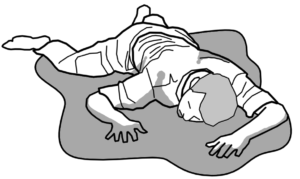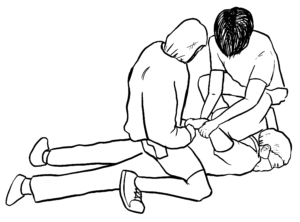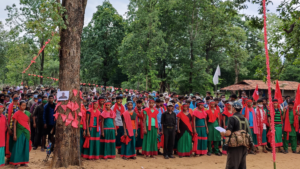A retrospect of ancestral domain landgrabbing in Far South Mindanao

The United Nations set August 9 as the International Day of Indigenous Peoples. National minorities in the Philippines mark this day with their continuing struggle for land and rights. Among them are the Lumad in far south Mindanao who have suffered decades upon decades of attacks, most especially under Ferdinand Marcos Sr’s martial law.
The worst destruction of forests in south Mindanao started during the 1950s. Foreign companies carried out widespread plunder under the Parity Law which allowed the US and other imperialist enterprises to exploit the Philippines’ natural resources. They utilized the puppet state and the reactionary armed forces to drive away the Lumad and grab the riches of their lands. This pushed the indigenous peoples to launch armed and unarmed resistance in the defense of their communities.
Uprisings became widespread in the 1950s and 1960s against logging, expansion of cattle ranches and landgrabbing by some local bureaucrats in Sarangani and South Cotabato. In Davao del Sur, the Klagan in Malita drove away Capt. Villamor, an officer of the American military who grabbed the Lumad people’s land and exploited them.
To defend the interests of big business, the Philippine Constabulary at the start of the 1960s launched a large-scale operation in Malungon, Tampakan and areas surrounding Mt. Matutum. Amid the tumultuous situation, the people were caught unawares of Dole Philippines’ entry in Polomolok, Tupi and Mt. Matutum in 1963. More than 200 natives opposed the plantation and killed the soldiers and paramilitaries who were defending the companies.
Japan and the US each undertook oil and iron explorations in parts of Maasin and Alabel in 1965 and 1968. Come 1969, US company Sierra Madre Corporations started its operations. But this was resisted by the B’laan, forcing the company to leave after two years.
The latter years of the 1960s saw the prevalence of armed resistance by the B’laan in Kyumad, Alabel and the frequent attacks against ranches. Aiming to pacify these, Ferdinand Marcos Sr in 1971 sought a dialogue with the leaders of the uprising. They were promised the recognition of Kyumad as an ancestral domain on the condition that the community will submit to the programs of the Presidential Assistance for National Minorities or Panamin.
Violence and deception
Marcos launched intense armed attacks alongside Panamin in order to neutralize the resistance of minority communities. Marcos assigned his crony Manuel “Manda” Elizalde as president of the agency.
Elizalde and the Panamin’s programs in the T’boli communities in South Cotabato drew controversies. After Marcos declared Kematu as part of the 5,224-hectare Tagabili Reservation, Elizalde established the agency’s center of operations there. But shortly after, mining operations in Kematu started through the collusion of Marcos-Elizalde with some tribal leaders.
In 1971, Marcos and Elizalde shocked the whole world with the “discovery” of a group of “Stone Age people” residing in a cave in the mountain of Tasaday in Lake Sebu, South Cotabato. In order to supposedly protect the “Tasaday tribe,” 19,000 hectares was immediately declared as Tasaday Reservation.
But the regime’s lies and humane pretensions were later exposed. It became clear that the “discovery” of the Tasaday was merely a political maneuver to save the image of Marcos. Also, the establishment of reservations was to make sure that only the Marcos-Elizalde clique will benefit from the natural resources and whatever is left of the forests in the ancestral lands. (Next issue: Victories in Lumad struggles during martial law.)




